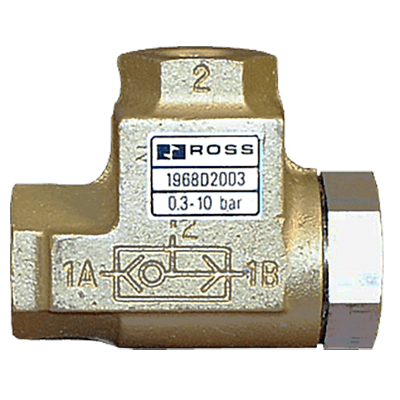What Is a Shuttle Valve?

A shuttle valve, also known as a “double check valve,” is a type of valve with two or more inlet ports and one outlet port. It is commonly used in hydraulic and pneumatic systems to control the direction of fluid flow. The valve automatically connects the outlet to the higher-pressure inlet, ensuring fluid flow from the source with the highest pressure.
Shuttle valves are valued for their ability to easily switch fluid direction for various processes, with a simple structure that contributes to durability and ease of maintenance.
Uses of Shuttle Valves
Shuttle valves are employed in several applications for fluid directional control, including:
1. Hydraulic Units
They play a crucial role in hydraulic systems, directing fluid from hydraulic pumps to cylinders and motors, allowing for precise control of movement and operations.
2. Transportation Equipment
In transportation, shuttle valves are integral to hydraulic braking systems in vehicles like cars and trains, controlling the flow of hydraulic fluid to apply braking pressure effectively.
3. Chemical Plants
In chemical manufacturing, shuttle valves are used to mix fluids from different sources accurately, ensuring the correct chemical formulation for processes.
Principle of Shuttle Valves
Shuttle valves operate using a movable element or shuttle within the valve body, which shifts based on fluid pressure to connect either of the inlet ports to the outlet port. This mechanism allows for the automatic selection of the fluid path based on pressure changes, ensuring a continuous flow through the valve.
Materials like aluminum for the valve body and nylon or synthetic rubber for the valve plug are commonly used, with the design prioritizing simplicity, reliability, and flexibility in control processes.
How to Select a Shuttle Valve
The selection of a shuttle valve should consider factors such as the fluid type, operating pressure, connection bore size, and material compatibility to ensure optimal performance and safety in its intended application.
1. Fluid to Be Used
Select valves compatible with the specific characteristics of the operating fluids, considering factors like corrosion, temperature, and viscosity.
2. Operating Pressure
Choose a valve that can withstand the system’s maximum pressure to avoid damage or safety hazards.
3. Connection Bore
The bore size should match the system’s piping, with common connection types including screwed connections like Rc and NPT.
4. Material
Select materials based on fluid compatibility and environmental conditions, with options ranging from stainless steel and brass to aluminum and plastic.